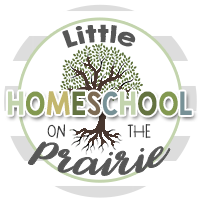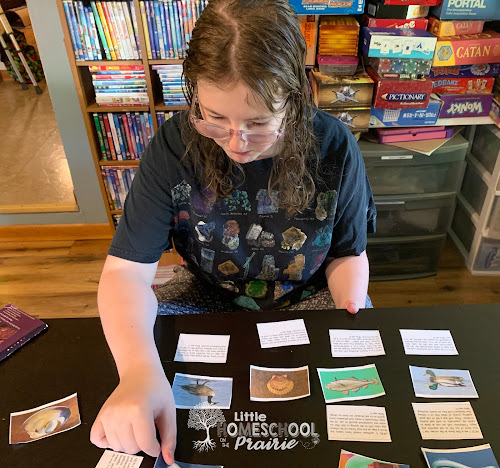Jun182020
Exploring the U.S. Life-Saving Service 1878-1915: 17 Student Workshops with 120 Activities from Rebecca Locklear Review
Disclaimer: I received a FREE copy of this
product through the HOMESCHOOL REVIEW CREW in exchange for my honest review. I
was not required to write a positive review nor was I compensated in any other
way.
Do you have kids that enjoy adventure on the seas with brave men who risk their lives to save others? What about history that involves real life stories about coastal search and rescue? My kids do and the last few weeks we have been learning history and reading about some pretty incredible men who gave all to save others. Exploring the U.S. Life-Saving Service 1878-1915: 17 Student Workshops with 120 Activities from Rebecca Locklear has been a lot of fun. My family received the digital e-book version however; you can order this as a physical book too.
Exploring the U.S. Life-Saving Service 1878-1915: 17
Student Workshops with 120 Activities is intended for grades 4-12.
The curriculum is broken down into 4 units. Each unit has
Workshops. There are 17 of them and each workshop has a different focus. This
is very hands-on with activities-120 to be exact. Some of the activities are
cooking, art, games, drama, dance, music, stories, poetry, videos, online
resources, critical thinking, and more.
After looking over the contents of the curriculum I
decided to print all of it out. I’m not one to print something unless I know it
will work for us. It was formatted as a PDF file and very easy to download and
print.
Each Unit has a clear and concise objective and a list of
materials at the beginning of the unit.
The first part is an overview about U.S
Life-Saving Service. I read this part with both my kids age 14 and
17 together before we broke off into their own interest in the workbook. We
learned that because of the increase of the trade by sea more assistance was
needed for shipwrecked ships and the sailors on them. They wanted to save the
cargo that was on the vessels too. On the East coast they had stations every 6
to 8 miles apart but not many on the west coast.
We explored the different personnel, what their duties entailed, and salary that didn’t include sick pay or disability pay. Every year the men got discharged and rehired the next season. The Quarters at the Station in Chatham, Cape Code, and Massachusetts were very isolated. The men didn’t have much privacy with their sleeping area. All the main socializing took place in a mess room. Every man took turns cooking and had to buy their own food so they usually hunted birds, fish, shellfish, and eels during their free time to make their money stretch out. They all had a daily work schedule and weekly drills and maintenance schedules which we had a glimpse into that daily schedule. There were several duties like Lookout Duty, Patrol Duty, and Training. This prepared those brave men to Rescue sailors regardless of the hour whether the sea was calm or stormy. This section ends with what ended the era of life saving from 1878-1915.
There are 9 photo activities like students asking
questions about the photos. One of the games “Surfmen, Line Up” you have to
work fast as a coherent team like those brave men had to do.
Unit 1: Life at the Station House My daughter who is 17 has special needs and a significant learning challenge was interested in doing this unit.
One area that amused her was Molasses
and Gingerbread. We explored what molasses is, how it was made, and
where it came from. Sailors brought molasses back to sell it for .10 cents a
quart which was a good amount of money back then. One of the activities was
tasting molasses. My daughter said, “It looks like honey texture.” When
she tasted it she commented, “YUK!” “Surely this is what honey would taste like
if it ever could actually spoil!” This is coming from a honey lover
beehive keeper. After that we found a video to see how molasses was made.
The next activity was making Gingerbread Muffins which we used a recipe
provided in the workbook. At first she was unsure if she would like it since
molasses was “gross” in her opinion. We were a bit shy on the amount of ginger
the recipe called for so we had a weaker ginger flavor. Also, I was a tad short
on molasses. I did ½ molasses & dark corn syrup. What did she
think, “Yummy, can we make this again?”
Hunting, Fishing, and Eating was the next topic and she learned that the men had
no electricity, refrigerators, stoves, or grocery stores! What would those men
eat? We found out what they ate by playing a matching game of pairing
animals up to the correct description. I adapted it to one person and to her
abilities. After the game we talked about foods and how they cooked them. There
was another activity that was more for a group setting and we bypassed it.
The next unit: Skunk Stories. I read
this portion to her and she was mortified at getting sprayed by a skunk. I also
shared a personal skunk story with her when I got sprayed thanks to my dog when
I was much younger. The last section Camaraderie and Drama we
talked about it but didn’t do the activities. My kids don’t like skits and I
would have mutiny in my house and be thrown overboard. This area has a skit
with several characters and information on props and costumes. The skit was
well prepared and done.
Unit 2: Working Together at the Station was the unit my 14 year old son did and he did it independently with little assistance on my part. He read about the brass spyglass and tower work that the Surfman had to do for hours each day.
He was
intrigued with the Ships and Signals section. He has
always liked boats and pulled out a few of his models when doing the Kinds of
Ships activity. The pictures in the workbook tell you the name and a short
segment of information on them. He was able to identify his models.
Some activities he didn’t do were the Wig-Wag Flag
activity which involves more people. He read it and learned about this form of
Morse Code with a flag. Another area taught about was Beach Patrol and how the
men had to hold and use their lantern and keep track not to lose another
person. There is also a poem activity which my son just read over. At the end
he answered comprehensive questions in Part 3 wrap-up. There were several
questions that my son shared with me. He explained why the men had to
walk beach patrol and that they did it every day? There are a lot of
comprehensive questions that are very relevant for the intended age.
Rescues with Boats- Did you know a small canon was used in rescuing ships?
Also many times life-savers worked with other rescues outside of theirs. One of
the activities is a coloring page with questions on it. The following pages go
into other topics like why a ship didn’t drop an anchor so it wouldn’t run on
land, why not get in a lifeboat, life jackets, how many people survived, and
more topics covered.
Rescues Scenarios: Live or Die: Who lives and who perishes during a rescue operation
and you will find out that some actions worked during a rescue attempt and some
just didn’t during a rescue. Your actions will determine the outcome of the
victims from your actions. This is a group activity that my son just read over.
It would be real fun having more people. You divide into 2 groups and are
given rescue card scenarios. You have to act out the rescue with objects like
stuffed animals or whatever you have. With the information on the card you have
to determine if they lived or died and why. Afterwards the teacher reads the
results on each card.
The Survivor and Medicine Chest-In 1894 the Surfmen at one station tried to revive 118 sailors, but only 60 survived. Back in those days that was a good percentage. These men weren’t medical doctors but knew that hypothermia or drowning was serious and took actions to try to save the victims. My son read over the information and what were the common medical situations they dealt with from hypothermia to less minor issues. The next activity was a Drama Skit “The Survivor” This skit is based on a real story which my son read it. Another activity is a backpack where you write down the basic first aid items needed. My son did this activity and we talked about what you would need in your backpack. He went on to learn what items were needed and a list of how and why it was used.
He asked me to help him with a smelling salt activity. We followed the
recipe provided and added our own essential oils to it. We put allergy relief
essential oil for him so he could use it. He keeps it on his school desk now.
We didn’t do Unit 3 or 4 yet. My son plans on going back
and working through Unit 1, 3, and 4 this summer.
Unit 3: The Culture of Character- I like my son learning about character. We live in a
different culture and character was essential back in that era. You will learn
what was expected of men manner wise. One area was respecting women, rules of
wearing hats, art of toasting, and so much more. There are a lot of activities
to enhance learning of this topic.
Unit 4: Relevance Today-the objective is to learn 5 priorities for survival and
decide upon 10 survival essentials. It goes into more details about the
priorities. There are prepared activities in all situations from hiking, rock
climbing kayaking with an emphasis to not think “It will never happen to me”
but to be prepared. There are several activities to reinforce the learned
skills. Some assessments are covered about Hypothermia and what to look
for and do.
There are so many activities throughout for all ages from
art crafts like painting rocks, and more. I liked that for older students you
can go further with this with some more information on Research Areas relating
to U.S. Life-Saving Services from archeology, boats, Great Lake shipping,
knots, hunting, rescue devices, and so much more.
The Appendix has more information and several recipes to
try. If you aren’t sure of the vocabulary there is a glossary in the back.
This is an impressive curriculum that would work for one
student up to a homeschool co-op. Even though we didn’t do some activities as
they were written. I was able to adapt it to accommodate both of my children
easily.
You can learn more by signing up for Rebecca Locklear emails from her blog. I expect to see more amazing curriculum in the future
from her.
Rebecca Locklear also has another curriculum The Mayflower at Cape Cod - Stories, activities, and research that connect 1620 with life today. You can find out more from reading the Homeschool Review Crew reviews about it and the one I did. I look forward to reading what others thought about Exploring the U.S. Life-Saving Service 1878-1915: 17 Student Workshops with 120 Activities and how they used it in their homeschool. Click here or on the graphic below.


Search This Blog
Grab my button!

Followers
Homeschool Planet
Popular Posts
-
About the Book Book: Capture the Moment Author: Suzanne Woods Fisher Genre: Contemporary Romance Release date: May 6, 2025 Kate Cunn...
-
Disclaimer: I received a FREE copy of this product through the HOMESCHOOL REVIEW CREW in exchange for my honest review. I was not required t...
-
We are learning about the Viking in our history studies. What better way the enhance the learning by adding a craft to the mix. With my kid...
-
Disclaimer: I received a FREE copy of this product through the HOMESCHOOL REVIEW CREW in exchange for my honest review. I was not required t...
-
This is a post that I did back in 2009. I have put the Lapbook on my 4share for others to use. This is the first time I have put one of my...

































0 comments:
Post a Comment
Thank you for visiting my blog.